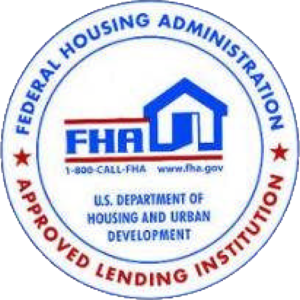If you have been in your home for several years, chances are you have built up equity. Home equity is defined as the difference between how much you owe on your home and what is the current value of the home. Home equity typically grows as you make mortgage payments. Part of each payment pays the interest; the other part pays down the principal amount. The principal amount that is paid down converts to equity. Equity also grows as your house appreciates in value. Recently homes in many areas have been appreciating significantly, thus increasing equity levels. To find out how much equity you’ve built up in your home, subtract the amount of money you owe on your mortgage from your property’s value.
This equity can be leveraged in different ways. There are two ways to borrow against it, either by taking out a home equity loan, often called a second mortgage, or by setting up a home equity line of credit or HELOC. There are differences in the two products that you should consider before deciding on which one is more appropriate.
With either type of loan, a percentage of the available equity in the property is available to borrow against. The amount you can borrow is based on factors such as the combined loan-to-value ratio, or (CLTV) ratio (total amount of all liens of the property including the new second mortgage vs appraised value) —which is normally 80% to 90% of the appraised value of the property. Additionally, there are other factors that will determine the specific terms your loan including your income as well credit score and payment history.
The home equity loan comes with fixed interest payments for a fixed term. This means you know what your payment is going to be every month. A fixed rate installment loan.
A home equity line of credit (HELOC), on the other hand, is similar to a revolving credit line that operates a lot like a credit card. You are borrowing against the available equity in your home and the house is used as collateral for the line of credit. As you repay your outstanding balance, the amount of available credit is replenished – much like a credit card. This means you can borrow against it again if you need to, and you can borrow as little or as much as you need throughout your draw period (typically 10 years) up to the credit limit you establish at closing. At the end of the draw period, the repayment period (typically 20 years) begins
While a home equity loan is like a standard mortgage in terms of re-payment schedules, HELOC terms typically have two parts. The first is a draw period, while the second is a repayment period. The draw period, during which you can withdraw funds, might last 10 years, and the repayment period might last another 20 years, making the HELOC a 30-year loan. Once the draw period ends, you cannot borrow more money.
During the HELOC’s draw period, you must make payments. These payments tend to be small—often amounting to just the interest only payments. During the repayment period, payments become substantially higher. That’s because you’re required to start paying back the principal. During the 20-year repayment period, you must repay all the money you’ve borrowed, plus interest at a variable rate.
With a home equity loan, it is easy to determine the cost. It is the amount of the loan plus any fees and fixed interest over the life of the loan. Determining the actual cost of the HELOC is more difficult. Because you are drawing against a credit line you might be drawing different amounts at different times. And because the loan has a variable rate you will likely have different rates for the different sums borrowed.
Which type of equity loan is the best for you might depend on what you are using the loan for. A home equity loan is a good choice if you know exactly how much you need to borrow and what you’ll use the money for. You’re guaranteed a certain amount, which you receive in full when the loan is advanced. Since you can only borrow once, people are often tempted to borrow more than they immediately need, just in case they don’t qualify for another loan in the future. Because they are lump sum payouts, they are usually used to fund larger expenditures like remodeling, debt consolidation or paying for college.
If you don’t know how much you will need, a HELOC might be better. Since you only start paying after you borrow for the credit line, some people will take out a HELOC as a financial planning tool. If they don’t’ need it they don’t’ have to pay anything, but if they need money it is there. It offers ongoing access to cash for a set period, usually about ten years. You can borrow against your line, repay it all or in part, and then borrow more later as long as you’re in the draw period.
One thing to remember though is that this credit line is revocable, just like a credit card. If your financial situation deteriorates or you home loses its value, and thus the equity you borrowed against, the lender might decide to reduce or close the credit line. Because the money might not be around later and because the interest rates vary, HELOCS are better suited for shorter term financial needs.
At EMM Loans, we help borrowers decide on which type of equity loan is best for them. If you need cash now or if you’re just thinking about putting a backup plan in place in case things don’t work out as planned, give our loan advisors a call. We are here to help.




